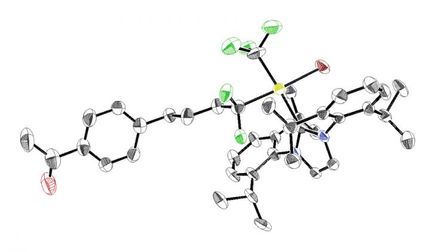Compound created at OSU could become important new antidepressant
Chemists at Oregon State University have discovered and synthesized a new compound that in laboratory and animal tests appears to be similar to, but may have advantages over one of the most important antidepressant medications in the world. A patent has been applied for on the compound, and findings on it published in the Journal of Medicinal chemistry . Continued animal studies and eventually, human clinical trials will be necessary before the compound could be approved for human medical use, researchers say.
"Based on our results so far, this promises to be one of the most effective antidepressants yet developed," said James White, a professor emeritus of chemistry at OSU. "It may have efficacy similar to some important drugs being used now, but with fewer side effects."
Early antidepressants such as tricyclic antidepressants, White said, often had undesirable effects such as constipation, dry mouth, drowsiness and hypotension, or low blood pressure. They worked by helping the body to raise levels of such neurotransmitter compounds as serotonin, norepinephrine, dopamine and others. A second generation of antidepressants, which included the drugs Prozac and Zoloft, were more selective and produced only minor side effects, but often took weeks to become effective and sometimes didn't help patients adequately.
"The prototype of the third-generation drug in this field is Cymbalta, which tries to better balance the inhibited re-uptake of serotonin and norepinephrine, further reducing side effects and offering more immediate efficacy," White said. "It's been extremely popular."
The new compound developed at OSU, however, has properties similar to Cymbalta in some ways, but in laboratory and animal studies does a better job at balancing body chemistry.
"Our compound is 10 times better than Cymbalta at inhibiting the re-uptake of norepinephine and comes close to the holy grail of a perfectly balanced antidepressant," White said. "It should produce even fewer side effects, such as concerns with constipation and hypotension. Final results, of course, won't be known until the completion of human clinical trials."
Topics
Organizations
Other news from the department science

Get the life science industry in your inbox
By submitting this form you agree that LUMITOS AG will send you the newsletter(s) selected above by email. Your data will not be passed on to third parties. Your data will be stored and processed in accordance with our data protection regulations. LUMITOS may contact you by email for the purpose of advertising or market and opinion surveys. You can revoke your consent at any time without giving reasons to LUMITOS AG, Ernst-Augustin-Str. 2, 12489 Berlin, Germany or by e-mail at revoke@lumitos.com with effect for the future. In addition, each email contains a link to unsubscribe from the corresponding newsletter.


















































